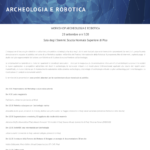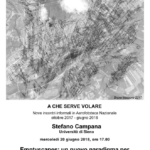Let us start with a quantitative remark. The systematic examination of past archaeological research, documentary sources, epigraphic material, place-name evidence and historical maps, combined with a long-lasting programme of field-walking survey, has produced a substantial amount of information on the Rusellae area – including around 80 archaeological contexts of various kinds within the transect now undergoing more intensive study.
Caution is of course needed in making comparative quantifications of the results achieved by this ‘traditional’ research compared with the wider range of information that can now be collected through the remote sensing (mainly based on aerial photography) and magnetometer and electrical resistance survey.
Nevertheless, the general increase in the ‘visibility’ of the archaeological evidence can be seen in the fact that these latter methods have so far produced 1886 previously undetected features within the sample transect.
That said, we need to focus our attention not only on numbers but also on the qualitative contribution to the stated objective of holistic landscape interpretation. To illustrate the possibility of achieving that goal it might be useful to look at parts of the sample transect in closer detail, discussing some of the results achieved so far.

